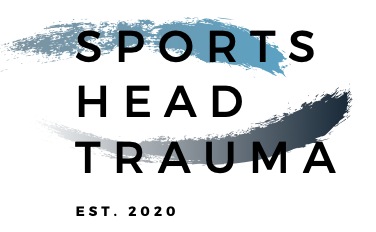By: Emily Woo

In 2011, I was an eager freshman at Kaiser high school in Hawaii, hellbent on getting my chance to prove myself to the rest of the varsity soccer team. My first concussion was nothing spectacular and happened during an inter-island tournament; I had jumped to head the ball at the top of the box and the next thing I knew, my legs had been swept out from under me and I found myself in the dirt. I had hit my head on the less than ideal field and was subsequently rushed off the field. Immediate symptoms included dizziness, nausea, and head pain while, the next day, I felt the same symptoms but with a sore neck as well. I ended up not seeking medical attention until getting back home to see my family doctor. It was here where Dr. Young confirmed I had experienced a minor concussion.
“On its own, this singular event didn’t seem like a big deal. But compounded with 3 additional concussions within the span of a year, it suddenly became a different story.”
My second concussion happened during a regular season game against the most infamous team in our league. Kahuku High School players were known for their impressively sized players and their aggressive tactics on the field. Uncharacteristically, I was playing forward as opposed to midfielder and as I was going for a long ball, the 6 ft tall (or so it seemed) Kahuku goalkeeper had the same idea. We both ended up missing the ball and instead collided into each other. My parents were in the stands and I was rushed to the ER immediately after. The ER doctor confirmed I had endured my second concussion. Unfortunately, I don’t remember my 3rd concussion too well but recall another ER doctor cautioning me that I should be careful going forward. My 4th and final concussion was by far the worst and happened during a club season rather than a high school game. There was a large scuffle in the box, a few players ended up falling and getting tangled around the ball and it was during this chaotic moment that my head got kicked instead of the ball. I was immediately pulled out of the game and rushed to the ER by my parents. At this point, I was eerily familiar with emergency rooms and knew what to expect. It was in this ER that the attending doctor strongly recommended that I reconsider my choice of sport and maybe consider something with less contact. Unsurprisingly, I chose not to listen.
While I don’t remember short term symptoms past dizziness, nausea and neck and head pain, at 24 years old, I can certainly feel the long term effects. The most impactful long term symptoms that I have been experiencing including severe migraines and difficulty with short term memory. This has proven difficult as a full time graduate student as well as throughout my undergraduate career.
Short term management of my concussions included using concussion headgear for a year after my last concussion, taking cognitive computer tests before and after seasons including at the collegiate level, and more frequent doctor’s visits in the 2 years following my last concussion. Long term management includes almost daily excedrin migraine medication with semi annual doctor’s appointments with neurologists.
My advice to others currently going through concussions and its adverse effects would be to take it seriously and understand that new research regarding these injuries will emerge everyday. One of the things I’ve noticed in hindsight is that when I was sustaining these injuries, the adverse long term effects as well as methods to treat them were underdeveloped and essentially non existent. After each concussion I had 1 to 2 weeks off and then that was it. By the time I was a junior and senior in high school (a few years later) the research was already expanding at a rapid pace. This resulted in a longer rest period and more serious treatment plans for my teammates who sustained head injuries during this time. Overall, this research is invaluable to young athletes as the brain is (obviously) the most important organ human beings have and protecting it to the best of our ability during youth sports should be the ultimate goal. Additionally, as existing research has overly focused on male athletes in specific sports, it is important that female athletes are finally getting the attention they deserve regarding head injury awareness and how to subsequently treat them in the most effective and specialized manner.
